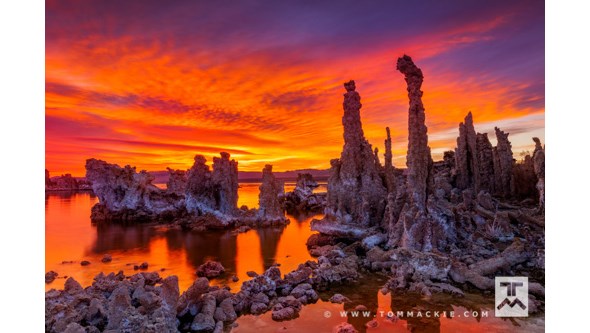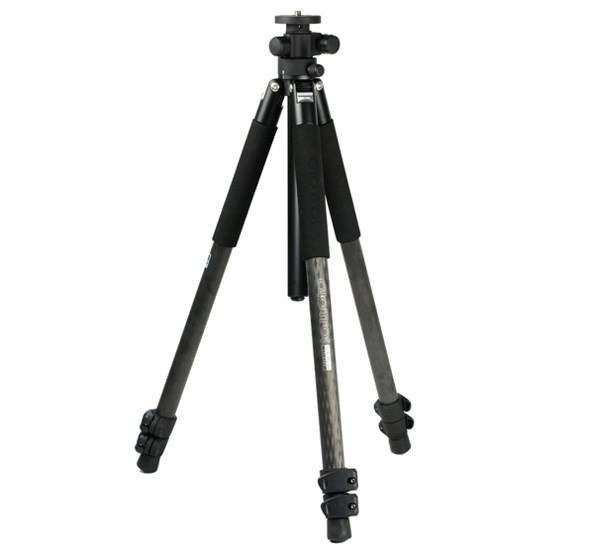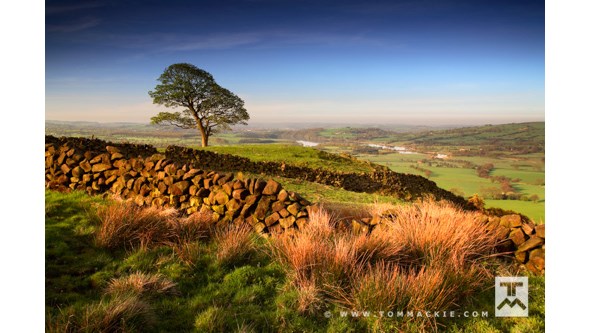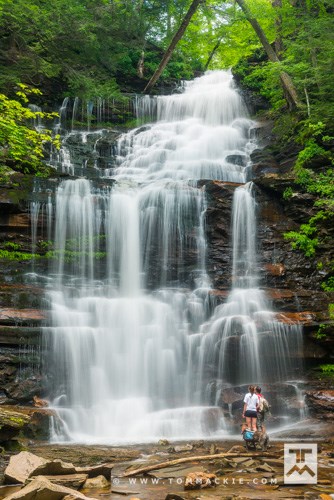Landscape photographer Tom Mackie shares 10 pieces advice for getting better landscape images.
1. Anticipate the light

Lighting is one of the most important aspects of a good photograph. Take the time to become familiar with your subject under different lighting conditions throughout the day, then decide when would be the best time to photograph it. I generally prefer side lighting as it brings out the contours and defines the shape of the subject. Anticipate the light, especially when photographing sunrise or sunsets. Remember that the peak colour of the sky only lasts a few minutes, so give yourself plenty of time to set up and compose your subject, then wait for the light show to happen. If you’re looking at a fantastic sunset and don’t have your camera readily at hand, then chances are it’s too late. Just enjoy the moment.
2. Design your image
A well-balanced composition goes hand-in-hand with good lighting to create a great photograph. A common mistake is placing the subject directly in the centre of the frame. There are times when this can make a powerful image, but if you divide the frame into six equal segments, like a noughts-and-crosses grid, and place your subject on any of the intersections, this will greatly improve the composition. Always check the edges of your frame to make sure no unwanted elements such as wires, tree branches or any other obstacles are creeping in. Conversely, it’s a good idea not to have elements such as rocks, trees or clouds drifting out of the frame; have them in completely or not at all.
3. Experiment with tripod-based techniques

A tripod will allow you to try special techniques such as long exposures, low light and macro photography - and it doesn’t have to be cumbersome and heavy. A small lightweight model will suffice with 35mm cameras. Carbon-fibre tripods are a lightweight answer to most formats. Apart from ensuring image sharpness, a tripod will free your hands from the camera and allow you to see exactly what is included in the viewfinder from edge to edge. Then you can adjust accordingly to eliminate any distracting elements that are breaking the edge of the frame.
4. Get closer for impact
Photojournalist, Robert Capa once said, “If you pictures aren’t good enough, you’re not close enough.” He wasn’t talking about using a telephoto lens either, as he commonly used a 50mm lens. Come in close and don’t be afraid of filling the frame with the subject. Decide what it is that attracts you to pick up the camera; it may be patterns, bold colours, or a face full of character. Eliminate everything else in the frame that detracts from the subject.
5. Use filters

If you only had the choice of using one filter, I would recommend a polariser. A polarising filter is extremely useful because it not only reduces atmospheric haze, but it also cuts down unwanted reflections and glare from surfaces such as glass or water, as well as increasing saturation. To get maximum polarisation, place your subject at 90 degrees to the sun. This will make clouds pop out from deep blue skies.
Neutral density grads are also very important. Available in varying degrees of density, with hard or soft transitions, they are perfect for controlling contrast when the foreground is darker than the sky, and they can also add drama and atmosphere to skies when clouds are present. I’d recommend investing in two and three-stop ND grad, as a one-stop doesn’t really have enough of an effect for most scenes.
6. Be aware of backgrounds
Distracting elements in the background that merge with your subject can be a picture killer. Power lines and telephone poles in a pristine landscape can be frustrating, so try adjusting your angle to omit these distractions. Skies with jet contrails are also taboo. If you can’t wait long enough for them to dissipate then, if possible, crop them out. Of course, you can always Photoshop them out, but it’s always better to get a ‘clean’ shot than to spend time retouching. The more effort you spend working an image, the less time you will need to retouch it.
7. Human interest

Generally, I avoid including people in my photographs because they tend to date the picture – which, from a commercial aspect, shortens the sales life of the image. But there are times when a well-placed person will improve the image. For example, I sometimes use a figure to give scale to a waterfall – try to picture this waterfall without the people and the size wouldn’t be very apparent. If you do include people in your photo to give a sense of place, choose someone who is dress according to the location. For example, don’t have someone in a T-shirt and baseball cap at the Taj Mahal...
8. Change your angle
Instead of shooting everything from eye level, try moving the camera higher or lower. Images from an insect’s point of view or from a bird’s eye view can be a refreshing and an interesting change. Include foreground subjects such as plants or rocks to give the feeling of depth to your image.
9. Be weather-wise

You don’t have to stop taking pictures just because the sun isn’t shining. Overcast conditions are ideal for photographing gardens, waterfalls, forests and woodlands because the softer light enables delicate details to be recorded, which would otherwise be lost in contrasty shadows in bright conditions. Great images can be made even when it’s raining, as this night shot of the Brooklyn Bridge in New York City shows
10. It’s in the bag
I always pack a large binbag for those low angles that require lying on my stomach. This is especially good in places like wet sand on beaches, muddy forest floors or anywhere where you don’t want to wear a bit of the local terrain home with you. It’s also useful to cover your camera and even the entire camera bag in adverse conditions.
About the Author
Tom Mackie is recognised as one of the world’s finest landscape photographers, his understanding of light, perspective and colour; the hallmark that has established his name both internationally and here in the UK. He has written several books and regularly contributes to a number of photography magazines. You can view more of his work on his website.

